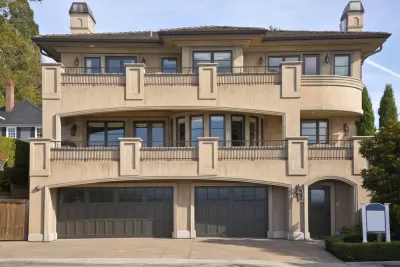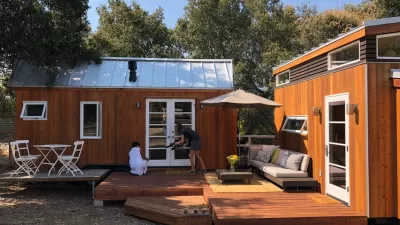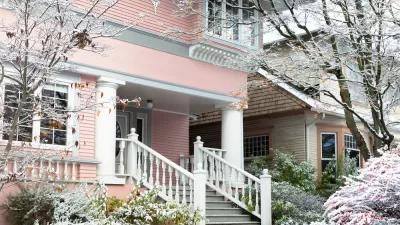One benefit of more accessory dwelling units (ADUs) could be less mansionization of oversized single-family homes.

Sarah Anne Lloyd reports on Seattle's efforts to tweak its ADU laws to make the buildings, also known as mother-in-law units or granny flats, to reduce the prevalence of McMansions.
Legislation that would reform ADU regulations is still taking shape, but some councilmembers are pushing for a version of reform that would reduce floor-area ratio (FAR) as a method to reduce the incentives for building large, bulky mansions on single-family lots.
Lloyd explains:
Single-family zoning in Seattle is currently extremely permissive. While it has height limits (25 to 30 feet), there’s no limit to FAR, as long as the giant home that results is only one home. This is how you get giant, out-of-scale houses in single-family neighborhoods: They’re built to maximize square footage under height limits.
The ADU legislation, in an effort to incentivize both building new homes and keeping older homes around, would set an FAR limit at 0.5 for the main home on a single-family lot, whether the home has ADUs or not.
ADU legislation has been in the works in Seattle for years now, so it might still be some time before the City Council produces a final action. ADUs were intended as a key component of affordability measures recommended by the city's Housing Affordability and Livability committee (HALA) in 2015.
FULL STORY: How ADU legislation could rein in Seattle’s McMansions

Planetizen Federal Action Tracker
A weekly monitor of how Trump’s orders and actions are impacting planners and planning in America.

Congressman Proposes Bill to Rename DC Metro “Trump Train”
The Make Autorail Great Again Act would withhold federal funding to the system until the Washington Metropolitan Area Transit Authority (WMATA), rebrands as the Washington Metropolitan Authority for Greater Access (WMAGA).

The Simple Legislative Tool Transforming Vacant Downtowns
In California, Michigan and Georgia, an easy win is bringing dollars — and delight — back to city centers.

The States Losing Rural Delivery Rooms at an Alarming Pace
In some states, as few as 9% of rural hospitals still deliver babies. As a result, rising pre-term births, no adequate pre-term care and "harrowing" close calls are a growing reality.

The Small South Asian Republic Going all in on EVs
Thanks to one simple policy change less than five years ago, 65% of new cars in this Himalayan country are now electric.

DC Backpedals on Bike Lane Protection, Swaps Barriers for Paint
Citing aesthetic concerns, the city is removing the concrete barriers and flexposts that once separated Arizona Avenue cyclists from motor vehicles.
Urban Design for Planners 1: Software Tools
This six-course series explores essential urban design concepts using open source software and equips planners with the tools they need to participate fully in the urban design process.
Planning for Universal Design
Learn the tools for implementing Universal Design in planning regulations.
Smith Gee Studio
City of Charlotte
City of Camden Redevelopment Agency
City of Astoria
Transportation Research & Education Center (TREC) at Portland State University
US High Speed Rail Association
City of Camden Redevelopment Agency
Municipality of Princeton (NJ)





























